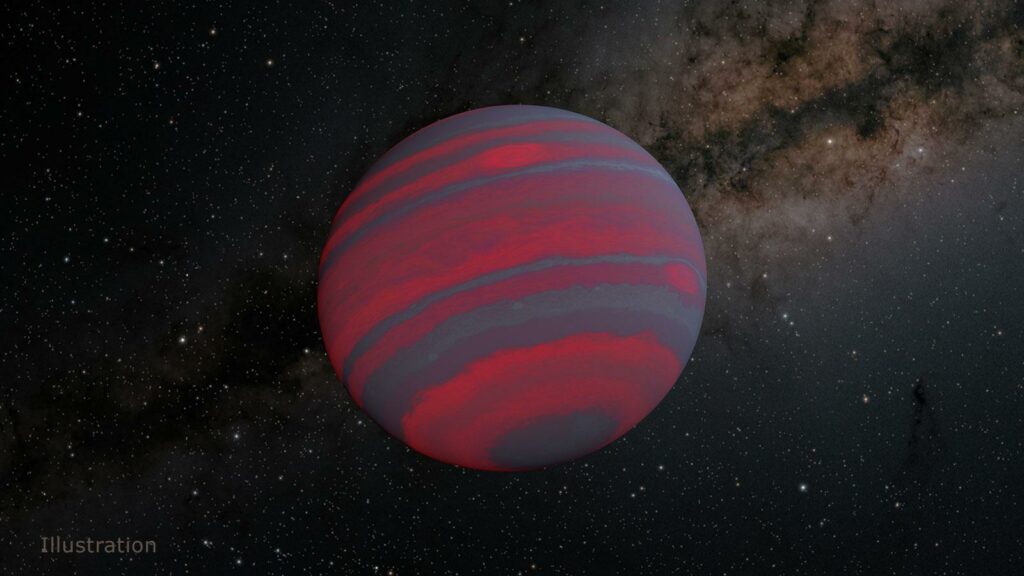The James Webb Space Telescope has confirmed the existence of silicate clouds in the atmosphere of the brown dwarf VHS 1256-1257 b. This discovery is an important milestone on the way to understanding the structure of “failed stars”.

VHS 1256-1257 b is part of a system consisting of two red dwarfs located 72 light-years from the Sun. Its mass is 19 times that of Jupiter.
Astronomers classify such objects as brown dwarfs. They occupy an intermediate position between giant planets and stars. On the one hand, their mass is not enough for permanent fusion reactions based on hydrogen atoms to “start” in their bowels (because of this they got their name “failed stars”). On the other hand, unlike planets, some reactions involving deuterium and lithium nuclei can still occur inside brown dwarfs. But, by astronomical standards, they last very short, after which the brown dwarfs gradually cool down.
Previous observations have shown that VHS 1256-1257 b has a reddish tint. Astronomers have attributed this to the presence of clouds in its atmosphere.
To test this assumption, the researchers used the James Webb Space Telescope (JWST). It managed to obtain the spectrum of VHS 1256-1257 b, which showed that water, methane, carbon monoxide and carbon dioxide, sodium and potassium are common in its atmosphere.
JWST also managed to find clouds in the brown dwarf’s atmosphere. They are long structures consisting of submicron-sized silicate particles (most likely, these are minerals such as forsterite, enstatite and quartz). Similar clouds were previously predicted, but their existence could not be confirmed before JWST.
Earlier we talked about how JWST found organic molecules in a protoplanetary disk around a young star.
According to https://www.sciencealert.com
Follow us on Twitter to get the most interesting space news in time
https://twitter.com/ust_magazine
